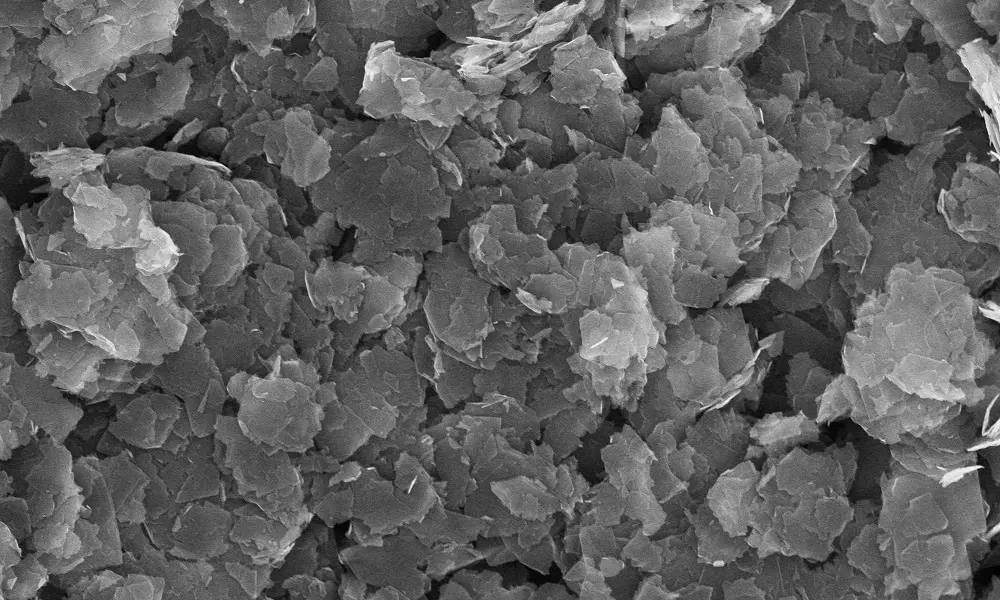
Graphene's material promise
Discovering graphene
🏆 The Nobel prize winning discovery to achieve a decade-long goal
In 2010, the discovery of graphene won Professor Sir Andre Geim and Professor Sir Kostya Novoselov from the University of Manchester the Nobel Prize in Physics. By isolating a layer of carbon just one atom thick their research team achieved a goal that had been set out decades before, when the theoretical existence of graphene was predicted by PR Wallace in a paper called ‘The Band Theory of Graphite’ in 1947.
For decades, physicists knew graphene should exist but could not make it. The first method they found turned out to be surprisingly simple.
According to Professor Novoselov, the laboratory was experimenting for entertainment and its own interest, rather than grant-supported research. The same lab had a history of similar experiments, such as creating adhesive tape based on the physics of geckos’ feet. This time, the team wanted to see if it could make a transistor using graphite.
To create a layer of carbon just one-atom thick, the team tried a few different methods, for example, polishing an expensive piece of graphite until it became very fine. None of these worked – the expensive graphite just turned into dust. The team was close to giving up. However, Professor Novoselov noticed another colleague was using sticky tape to clean the surface of graphite to study it in a scanning tunnelling microscope. He picked the piece of tape out of the bin and turned it into a transistor.
This is how the team developed the ‘Scotch Tape’ method, also known as ‘micromechanical cleavage’. All it involves is taking a piece of graphite, placing the tape on the top, and peeling off the top layer of graphite. What is left on the tape is essentially a layer of graphene.
Because of the simplicity of the method, and the openness of the team that discovered it, researchers everywhere soon began to create their own graphene.
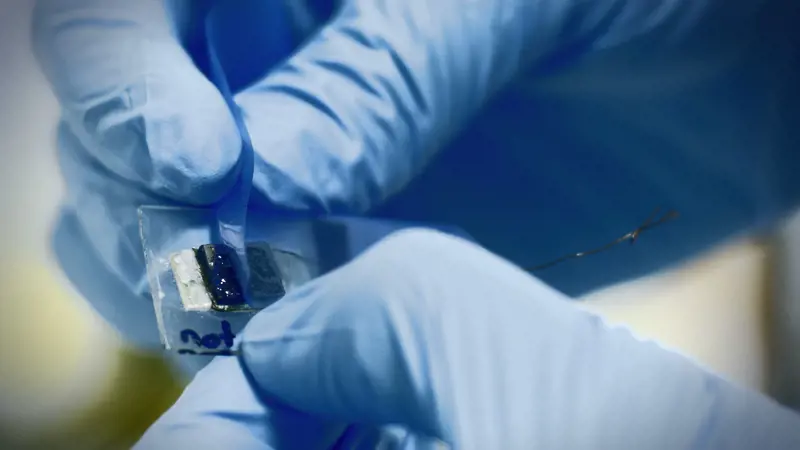
A variety of methods exist for producing graphene on a mass scale, but Scotch Tape remains a favourite in labs across the world © University of Manchester
Graphene turned up unexpectedly in 2004. Its novelty and, as a new form of carbon, apparent simplicity captured the imagination of the research community. Here was something that materials researchers could investigate with techniques that they had honed over many years, be they borrowed from work on electronics, polymers, metals or even biomaterials.
This outbreak of research into a material that promised to be “stronger than steel, harder than diamond and lighter than paper” created a deluge of publications, and press releases promoting them, that promised all manner of potential applications. In 2011, a research team at the University of Manchester, the birthplace of graphene, offered a paper demonstrating that combining graphene with metallic nanostructures showed “a 20-fold enhancement in harvesting light by graphene, which paves the way for advances in high-speed internet and other communications”. In 2014, a team at the University of Sunderland announced that it was a part of a €1 billion EU initiative, the Graphene Flagship, to “conduct a series of tests analysing the properties of graphene to determine how it behaves when it’s used to enhance the advanced composite materials used in the production of cars”.
There were also announcements about the use of graphene in touch-screen technology, flexible electronics, fuel cells, microwave shielding in satellite communications, 3D holograms, wearable electronics, energy storage, as a bacteria killer, to make fertilisers more efficient, and many others uses.
The interest in graphene also led to a wider focus on 2D materials (those that consist of a single layer of atoms) in general, with significant interest in finding those with unusual characteristics, for applications such as photovoltaics, semiconductors, and electrical and electronics applications.
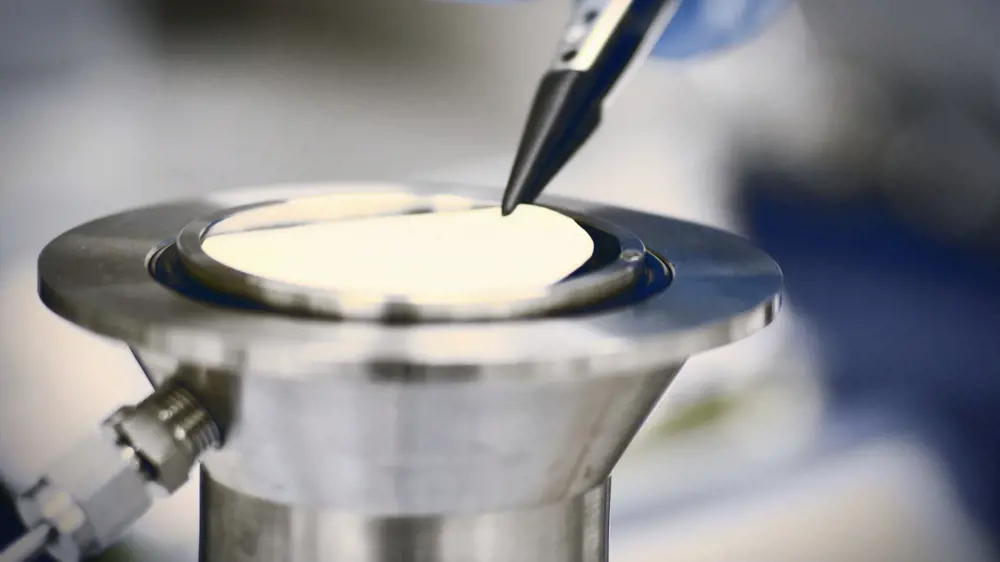
By 2025, the UN expects that 14% of the world’s population will encounter water scarcity. It is hoped that types of graphene-oxide membrane systems, such as this, could be built as small plants, making the technology accessible to countries that need cheaper and more portable ways to develop clean drinking water © University of Manchester
As the attention on graphene, and 2D materials, waned, articles appeared in the media wondering what happened to the promise of this “not-so wonder material”. Any new material – be it graphene, C60, or high-temperature superconductors, to pick examples from recent decades – takes time to move out of the laboratory into commercial use. The material starts as a novelty that researchers have to characterise before anyone can begin to test possible new applications. Then they must devise ways of making and processing the material in commercial quantities.
In the case of graphene, these are still early days in the transition from laboratory through to production lines. One sign of the industrial interest in graphene, and the breadth of its potential applications, is the portfolio of projects that have received backing in a series of funding competitions run by Innovate UK (IUK), now a part of UK Research and Innovation.
Industry interest
🦠 Incorporating graphene into other materials and unexpected applications
An early Innovate UK (IUK) project tackled the need to understand the properties of graphene when the National Physical Laboratory (NPL) sought support “to investigate the feasibility of rapid analysis techniques that can be used to monitor graphene produced in a real-world graphene reactor”. In partnership with 2-D Tech, NPL also received backing for a project that explored how best to incorporate graphene into other materials, such as thermoplastics and epoxy resins, so that the resulting graphene-reinforced composites maintain the desired mechanical and electrical properties. Along similar lines, Haydale Composite Solutions joined NPL to adapt a patented process for distributing functional materials in polymers for use with graphene, which can be difficult to disperse.
These projects tackle the all-important need for industrially viable processes that can make graphene and incorporate it into other materials. Composites Evolution Limited bid for IUK funding to use graphene in materials where fire resistance is essential, in composites in aircraft for example. Another project on ways of producing graphene materials, which included Johnson Matthey, did R&D into plasma deposition for thermoelectrics. This was for work on fabricating electrodes for thermoelectric devices that can convert a heat-gradient directly into electrical power, with the aim of providing the UK “with an advanced technology to convert waste heat into useful power”.
IUK has also backed graphene projects as a part of its programme to support the development of electric vehicles in the UK. One project included R&D into rapid battery charging using graphene supercapacitors. Another supports a feasibility project focusing on the industrial-scale improvement of lithium-ion batteries by adding ultra-high-quality graphene to enhance the life cycle, charging rate and capacity of batteries. Johnson Matthey is also part of the SAFEVOLT project that brings together four leading organisations at the forefront of battery materials innovation, led by Talga Technologies Limited, which has extensive experience in graphene production and R&D.
Some applications of graphene backed by IUK take the material in unexpected directions. For example, it has funded a project on the development of an anti-biofouling coating that hopes to exploit the hydrophobic and antibacterial properties of graphene.
By bringing together different organisations, this raft of projects will help to create strong links between academics and the industrial producers of graphene and other areas of nanotechnology. They also allow companies to see if graphene can bring new opportunities to their existing materials.
What is graphene?
Interest in this novel material stems from the fact that in graphene, electrons behave as massless particles, making the electronic properties of the material unlike anything seen before. The electrical charge carriers in graphene move at speeds 10 to 100 times faster than in today’s silicon chips. The material is a better conductor of electricity than copper, it is impermeable to gases, and is stronger than diamond, providing a unique mix of these properties.
in graphene, electrons behave as massless particles, making the electronic properties of the material unlike anything seen before
According to Professor Novoselov, it was important for the Manchester team to share its discovery. There was a lot to learn about the material. The team was impatient and knew that it would have taken it too long time to investigate all the possibilities. These days, graphene is one of several 2D materials that have significant potential for numerous products and applications. “Graphene, and other 2D materials, have some exciting and unique properties that can potentially improve the performance of an existing product or application,” says James Baker, CEO of Graphene@Manchester, a new project that is creating close ties with industry, to facilitate the development and commercialisation of products using the material. Graphene promises to deliver lighter parts in, for example, composites for automotive or aerospace applications, or increase performance, for example creating longer-lasting or faster-charging batteries and energy-storage devices.
Graphene, and other 2D materials, have some exciting and unique properties that can potentially improve the performance of an existing product or application
Other applications of the material have the potential to provide a much more direct impact on people’s lives. For example, microporous graphene membranes can filter dirty salty water and transform it into safe drinking water.
It took years to develop this membrane. At first, the Manchester team discovered that when it is placed in water, a graphene-oxide membrane swells and blocks larger molecules from flowing through it. It also managed to filter out small nanoparticles, organic molecules, and even large salts. However, the filters could not remove soluble molecules such as common salts, producing a problem if the membrane was to be used for drinking water as it could not filter seawater.
“Researchers in our National Graphene Institute Membranes Lab developed a strategy to avoid the swelling of the graphene-oxide membrane in water,” says Baker. Instead of the membrane swelling, the team, led by Professor Rahul Raveendran Nair, developed a way to control precisely the pore size in the membrane. They achieved this by producing the membrane in a high-humidity environment, then using an epoxy coating to restrain the size of the membrane pores. This meant that even common salts could be sieved out of salty water, making it safe to drink.
“Creating scalable membranes with uniform pore size down to atomic scale is a huge step forward,” says Baker. “It opens new possibilities for improving the efficiency – and lowering the costs – of desalination technology across the globe.”
Graphene's strength for sport
🚲 A possible replacement for Kevlar, carbon fibre and carbon nanotubes in sport?
Graphene is extremely strong so could be a replacement for Kevlar, carbon fibre and carbon nanotubes in composite materials already used in items such as armour and sports equipment.
In March 2018, engineering company Versarien announced that it is working with Team Sky to produce graphene-enhanced cycling equipment. The collaboration will explore how adding graphene will benefit bicycle frames, wheels, tyres, helmets and even other equipment worn by the rider, by making them stronger and lighter.
This is not the first use of graphene in cycling equipment. In 2014, Catlike, a Spanish sports equipment company, used graphene to produce cycling helmets. In 2015, international wheelmaker Vittoria released a range of bicycle wheels built from graphene-enhanced composite materials.
The use of graphene in sport is not limited to cycling. In 2013, HEAD produced a tennis racket with a graphene coating on the shaft, which aimed to make the racket stronger and lighter. In 2018’s Winter Olympic Games in PyeongChang, South Korea, Skeleton athlete Dom Parsons took home a bronze medal with a sled that had an underside made from a graphene-enhanced carbon-fibre material, which provided the desired structural properties while delivering minimal aerodynamic drag. UK-based Bromley Technologies manufactured the sled design with Versarien, which it has been collaborating with since 2016.

Team GB athlete Dom Parsons with the graphene-enhanced sled that helped him win bronze at the 2018 Winter Olympics © Versarien
Trial and error
However, graphene does not hold all the answers. Not every project that has attempted to utilise the material has worked out, even for the application the team that made the discovery was trying for: to make a transistor. Professor Douglas Paul from the University of Glasgow has made transistors from silicon, germanium and other semi-conductor materials. He says that the problem with transistors is that to build a high-performance integrated circuit, there are up to 20 performance parameters of the transistor that matter, including different voltages, capacitance, currents, power, and temperatures. Typically, there is a trade-off between several of the parameters. Improve one parameter and it usually has a knock-on effect that makes another parameter poorer for the applications.
One such parameter is electron mobility. Transistors can be very different depending on whether there are many electrons with low mobility or few electrons with high mobility. The original papers on graphene transistors concentrated on mobility, but in the latest complementary metal-oxide-semiconductor (CMOS) technologies, mobility is less important than off-current, on-current and the operational voltage.
“These early papers only optimised the mobility and didn’t actually address the issues of building transistors that were useful in circuits,” says Professor Paul. “Later papers have got better, but the issue now is how to integrate at large scale to deliver a technology with lower cost or higher performance than CMOS and that is very difficult to achieve with the many 10s of billions of dollars spent every year to improve that technology.”
this monolayer of atoms, which is a great advantage for speed, also means that it absorbs very few photons for the shape formations that are used in most cameras, such as the mega-pixel camera in smartphones
Another potential application of graphene that Professor Paul looked at was photodetectors. At first it was promising. Graphene’s band structure and the range of energies electrons can have in the material, means it can respond to a wide range of wavelengths of light. The fact that it is a single layer of atoms also means it responds quickly. However, this monolayer of atoms, which is a great advantage for speed, also means that it absorbs very few photons for the shape formations that are used in most cameras, such as the mega-pixel camera in smartphones. This typically produces a very low absorption of light and quantum efficiency; two of the key parameters for photodetectors. Again, this sees a trade off in parameters required to produce the best photodetectors. Graphene has some properties that are excellent but these also lead to poor performance for other parameters.
Regardless of the outcome, graphene has presented researchers such as Professor Paul with an opportunity to try their tools and techniques on a new material. Although it has not been a key material in any of his research yet, Professor Paul says he does not rule it out completely for applications in the future. “It is worthwhile putting in all technologies that meet a certain threshold in performance across several parameters, otherwise you end up with such a long list that it is impossible to see which technologies are the real competitors,” he says. Roadmaps such as the International Technology Roadmap for Semiconductors (ITRS), produced every few years since 1999 with input from global semiconductor makers to present the industry’s R&D needs, are used to select the best technologies and concentrate developing those. For every £1 spend for research it costs £100 to get to demonstrating the technology with an application. It is then another factor of 100 to get from this point to a manufacturable product in the marketplace. Most technologies or materials in research being investigated in a roadmap for a specific application will not get to market.
Graphene is reminiscent of many other technologies that have been discovered. Gallium arsenide (GaAs), organic materials and carbon nanotubes are all examples of technologies that have gone through a similar process, sometimes described as a hype curve
Graphene is reminiscent of many other technologies that have been discovered. Gallium arsenide (GaAs), organic materials and carbon nanotubes are all examples of technologies that have gone through a similar process, sometimes described as a hype curve. At the start of any new technology, papers claim that the new material or technology is vastly superior to present technologies. This area then attracts a lot of research funding, followed by a rapid rise in the number of papers published and articles written.
“It sometimes feels like the new technology is being cited to do everything,” adds Professor Paul, “even things where the performance requirements are exactly the opposite.” He says this hype is produced to secure funding. Then, demonstrators appear that allow testing of applications, and it then becomes clear if a technology is competitive.
A role in the automotive industry
🚗 Unique graphene properties for automotive position sensors
The automotive industry has recently experienced a substantial increase in the integration of electronic control systems, with electronic components currently making up over 30% of the production cost. Position sensors are an example of this key enabling technology to monitor and control systems throughout the car, from engine management through to pedal position. Now, customers expect intelligence as standard and at no extra cost.
Current position sensors are either contact-based devices that achieve low performance at low cost, or contactless devices where performance and cost are both higher. The EU Horizon 2020 project developed GrapheneSens to assess the feasibility of creating novel graphene-enabled contact position sensors for applications in the automotive industry, home appliances and other relevant areas, with a combined worth of over £7.4 billion.
“The unique properties of graphene are its ability to provide excellent low friction and high resistance to wear, regardless of environmental conditions – both humid and dry environments,” says Dr Pufinji Obene, Operations Director at Precision Varionic International. “It can also form a barrier layer between the substrate surface and the environment, thereby preventing the permeation of liquids and gases leading to unwanted reactions at the substrate surface.” Therefore, graphene could be applied successfully to contact sensors since the surface of the substrate would last a long time. The GrapheneSens project aims to combine these benefits of graphene to develop graphene-based nano-composite coatings.
A bright future?
While commercialisation of graphene has been thin on the ground so far, confidence in its properties has led to significant investment. The University of Manchester remains an important place for research into, and development of, graphene. The UK’s National Graphene Institute (NGI) opened in 2015 and the Graphene Engineering Innovation Centre (GEIC) will open later this year. Both are part of the university and focus on graphene research and commercialisation. Since 2012, £61 million has been spent on the NGI, and a further £60 million on GEIC.
Cambridge Enterprise, the University of Cambridge’s programme to help staff and students commercialise their expertise and ideas, has recently led a £2.9 million seed funding round for spin-out Paragraf. A graphene technology development company, Paragraf develops electronic devices based on graphene and other 2D materials. It has already produced layers with electrical characteristics optimised for producing very sensitive detectors at commercial scale and improved efficiency contact layers for common technologies such as LEDs.
The UK government is also backing graphene. It is investing more than £120 million in “graphene research, training and development”, including £40 million towards a “collaboration and investment fund”, according to former Minister for Energy and Intellectual Property Baroness Neville-Rolfe, and another £50 million on a Graphene Applications Centre in Sedgefield, County Durham. To date, the Engineering and Physical Sciences Research Council (EPSRC) has awarded grants and funding totalling more than £30 million to institutions researching graphene and carbon nanotechnology.
Looking ahead, the University of Manchester predicts the likely growth in the global market for ‘graphene materials’ to go from £14.6 million in 2014 to more than £285 million in 2024, and “much higher” for graphene-enabled products.
for all the attention that graphene has attracted since the Manchester researchers started wielding their sticky tape in 2004, researchers have just skimmed the surface of possible applications
However, for all the attention that graphene has attracted since the Manchester researchers started wielding their sticky tape in 2004, researchers have just skimmed the surface of possible applications. Thousands of researchers around the world are approaching this new form of carbon from many different angles.
***
Abigail Beall spoke to James Baker, CEO of Graphene@Manchester, Professor Douglas Paul, EPSRC Research Fellow in electronic and nanoscale engineering at the University of Glasgow, and Dr Pufinji Obene, Operations Director at Precision Varionic International, to write this article.
This article has been adapted from "Graphene's material promise", which originally appeared in the print edition of Ingenia 75 (June 2018).
Contributors
Abigail Beall
Author
Keep up-to-date with Ingenia for free
SubscribeRelated content
Materials
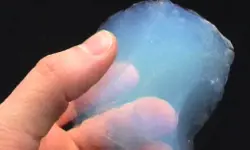
Aerogels
Among some of the lightest known solid materials, aerogels, formed by removing liquid from gels, have many uses ranging from catalysts and sensors, to being used on NASA missions.
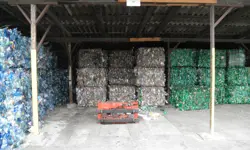
Recycling household waste
The percentage of waste recycled in the UK has risen rapidly over the past 20 years, thanks to breakthroughs in the way waste is processed. Find out about what happens to household waste and recent technological developments in the UK.

Diamond technology: beyond hardness
Diamond is being used in an increasing variety of industrial and technological applications, due to other properties in addition to its hardness. The UK is home to a wide range of diamond research, development and synthetic diamond production activities.

A lot more than lubrication
The control of friction and wear in mechanical systems by lubrication and surface engineering has led to safer, faster transport as well as medical innovations. Ian Hutchings FREng, GKN Professor of Manufacturing Engineering at the University of Cambridge, highlights the progress and some failures of the important discipline of tribology.
Other content from Ingenia
Quick read

- Environment & sustainability
- Opinion
A young engineer’s perspective on the good, the bad and the ugly of COP27

- Environment & sustainability
- Issue 95
How do we pay for net zero technologies?
Quick read

- Transport
- Mechanical
- How I got here
Electrifying trains and STEMAZING outreach

- Civil & structural
- Environment & sustainability
- Issue 95